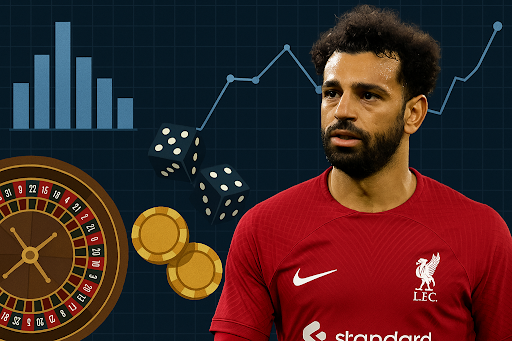Liverpool FC’s reputation has always been built on unforgettable matches and a devoted fanbase, but there’s more behind their recent resurgence than just tradition or emotion.
In the past decade, Liverpool has quietly turned into one of football’s most analytical clubs, using data to influence everything from player signings to in-game strategy.
This approach has sparked debates—can spreadsheets really outthink the instincts of seasoned scouts or passionate supporters?
This article unpacks how Liverpool blends analytics with experience, revealing why their numbers-driven strategy is changing not just how they win, but how fans experience the club itself.
How data and transparency are shaping modern football analysis
Football isn’t just about big goals and highlight reels anymore. The sport has entered a new era where numbers and openness matter as much as the final score.
Clubs use analytics to scout talent, study opponents, and optimize tactics. Meanwhile, fans expect more than punditry—they want clear stats that back up claims on match day. Bettors are joining this trend too, demanding proof instead of guesswork before placing a wager.
This shift is fueling platforms like stakehunters.com, which brings a new level of accountability to football predictions. Here, you don’t have to take someone’s word for it—every tipster’s win-loss record, profit margin, and yield percentage is tracked and published in real time.
It’s not just about picking winners; it’s about understanding the process behind each recommendation. This transparency lets users spot genuine expertise and avoid empty promises—something that was nearly impossible a decade ago.
For everyone involved in football—from boardroom analysts to weekend punters—the conversation has changed. Data-driven platforms are making smarter decisions possible while raising the bar for honesty in the game.
Liverpool’s analytics revolution: from pitch to boardroom
If you ask any Liverpool supporter what’s changed most in the past decade, you’ll hear about trophies—but insiders point to something less visible: data.
Analytics has become Liverpool’s not-so-secret advantage, driving decisions everywhere from the training ground to the boardroom.
Every key moment—whether it’s scouting a young prospect or rethinking a pressing strategy—is now informed by more than gut feel. The numbers shape squad building, recruitment, and even how players prepare week to week.
What once seemed like science fiction is now part of daily club life. At Liverpool, data isn’t just for analysts in back rooms; it guides coaches, scouts, and executives looking for that extra percentage.
This shift hasn’t been easy for everyone. Tradition runs deep at Anfield. Yet by embracing analytics alongside old-school intuition, Liverpool continues setting the standard for what it means to win in modern football.
Recruitment: finding value others miss
Liverpool’s transfer strategy stands out because it leans hard on numbers few rivals track as closely.
The scouting team doesn’t just watch hours of match footage—they run player stats through predictive models that flag underappreciated strengths or hidden risks.
That’s how they’ve found bargains who outperform expectations year after year. A clear example comes from 2023–24 Data-Driven Recruitment, where real-time analytics helped identify and sign Stefan Bajcetic before bigger clubs took notice.
Bajcetic was far from a household name when he arrived but quickly proved his worth on the pitch. His rise is no accident—it reflects Liverpool’s commitment to using data not just as a filter, but as a driver of opportunity and player development.
This approach reduces costly mistakes and ensures the club keeps uncovering talent others overlook. It also sets an expectation: if you’re coming to Anfield, be ready for both traditional tests and statistical scrutiny.
In-game decisions and tactical adjustments
Analytics doesn’t stop once kickoff arrives—if anything, its influence ramps up during matches themselves.
Coaches now use live performance dashboards on tablets to track everything from distance covered to pressing triggers and fatigue markers. This real-time feedback shapes substitutions, tweaks formations, or signals when it’s time to change tempo mid-game.
I’ve seen matches where Jurgen Klopp altered his midfield setup based on data showing opposition weaknesses—not something you’d spot with the naked eye alone. These insights often tip tight games in Liverpool’s favor by exploiting gaps before rivals can adjust.
Of course, there are limits—emotion and experience still matter under pressure—but Liverpool’s willingness to blend tech with instinct gives them more options on matchday than ever before.
Analytics beyond the pitch: how data is reshaping the Liverpool fan experience
It’s not just Klopp and his staff crunching numbers anymore. Liverpool’s focus on analytics is changing how fans everywhere connect with the club.
From live match stats to interactive social media posts, supporters now get a deeper, more personal look at what’s happening on and off the field.
This shift goes far beyond the scoreboard. It creates new ways for fans to engage, debate, and even predict outcomes—making every moment around Liverpool FC more insightful and rewarding.
Fan engagement through data-driven content
Walk into Anfield or open your favorite Liverpool app, and you’ll see it: statistics are front and center. Player heat maps flash during halftime analysis. Passing networks get dissected by pundits and passionate fans alike on Twitter.
Liverpool has leaned into visualizations that translate complex analytics into simple stories. Supporters don’t need an advanced math degree to understand xG or possession swings—the numbers are woven into match commentary, push notifications, and even behind-the-scenes content.
What stands out is how approachable these tools have become. Younger fans can break down pressing efficiency in an Instagram story. Longtime supporters share analytical insights in WhatsApp groups or YouTube chats during live streams.
The result? Analytics aren’t just background noise—they’re part of everyday conversation across generations of Liverpool fans.
Fantasy football and betting communities
The explosion of fantasy football leagues and digital betting platforms has given rise to a new style of Liverpool supporter—one who lives by the numbers as much as by tradition.
These fans pour over player stats, predictive models, and injury reports before making transfers or placing bets. Platforms like StakeHunters have set the standard for transparency in this space, offering verified tipster records so users can see who really knows their stuff before following a pick.
A 2024 review on fan engagement trends found that clubs now use analytics to personalize experiences in real time. Whether it’s interactive quizzes during matches or stat-based challenges in fantasy leagues, data is bringing supporters closer together—and closer to the game itself—than ever before.
This wave of data-savvy fandom isn’t slowing down. For many modern Liverpool followers, stats are both a tool for strategy and a bridge that connects them to a global community of fellow supporters who speak the same analytical language.
Challenges and the future: balancing data and instinct
Liverpool’s rise owes plenty to smart analytics, but the club never forgets that football is more than numbers and models.
Behind every dataset is a manager making tough calls, players feeling pressure, and a fanbase craving passion as much as precision.
The challenge now is to blend the best of both worlds. Data guides recruitment, tactics, and training, yet there are moments—split-second choices on the pitch or key locker room speeches—that statistics can’t predict.
Moving forward, Liverpool will need to keep its edge by marrying technological progress with the intangible magic that’s always fueled great teams.
The limits of the numbers game
Not every football decision fits neatly into a spreadsheet. Even with Liverpool’s commitment to analytics, coaches and players talk openly about knowing when to trust their gut.
Jürgen Klopp has often said that “the feeling” he gets from a player in training or a team dynamic during a match can outweigh what any performance dashboard suggests.
This willingness to push back against the data when it matters keeps Liverpool adaptable. Whether it’s starting an out-of-form striker because of his attitude in warm-ups or adjusting tactics mid-match based on crowd energy, some factors simply escape quantification.
The real art lies in knowing when the numbers should lead—and when experience or intuition should take over.
What’s next for Liverpool’s analytics journey?
Liverpool shows no sign of slowing down its search for new ways to use technology on and off the pitch. The club invests in artificial intelligence for injury prevention, tracking systems for player fitness, and advanced video analysis for youth development.
This approach isn’t just about keeping up; it’s about setting standards others aim to match. According to the 2024 Analytics Market Forecast, elite clubs will keep pouring resources into analytics—driving a global market set to hit $18.2 billion this year.
For Liverpool, success means staying nimble: using cutting-edge tools while remembering that heart and instinct still win matches. If they get this balance right, they’ll shape football’s next chapter—and maybe carve out more iconic moments along the way.
Conclusion
Liverpool’s willingness to combine analytics with football heritage has redefined what success looks like at Anfield.
Data now sits alongside tradition, helping everyone from scouts to supporters see the game with new clarity.
The numbers don’t replace passion or instinct, but they offer a sharper lens for decisions on and off the pitch.
As technology continues to advance, expect Liverpool’s journey to set the pace—proving that insight and emotion can drive a new era of football brilliance.




